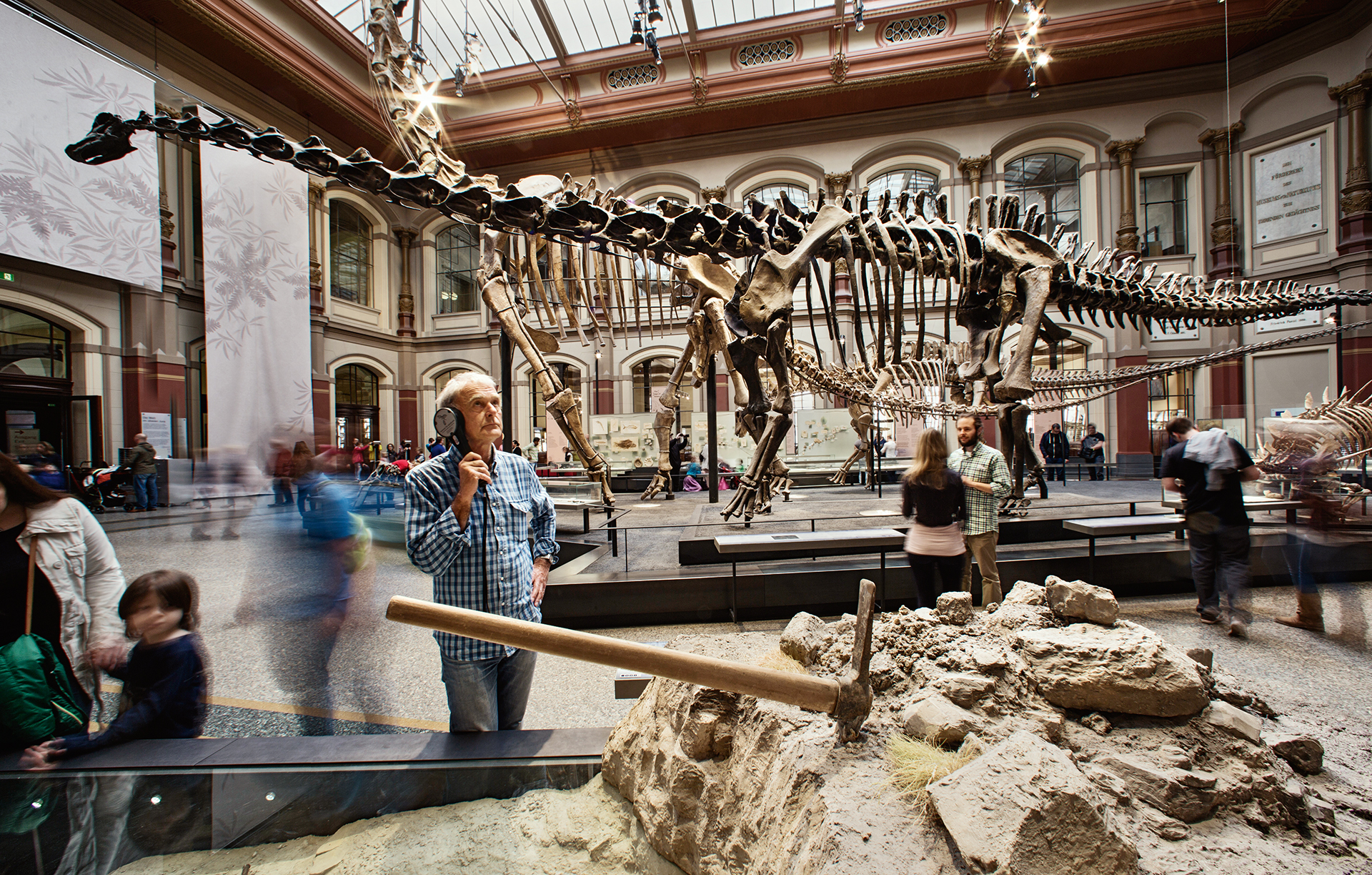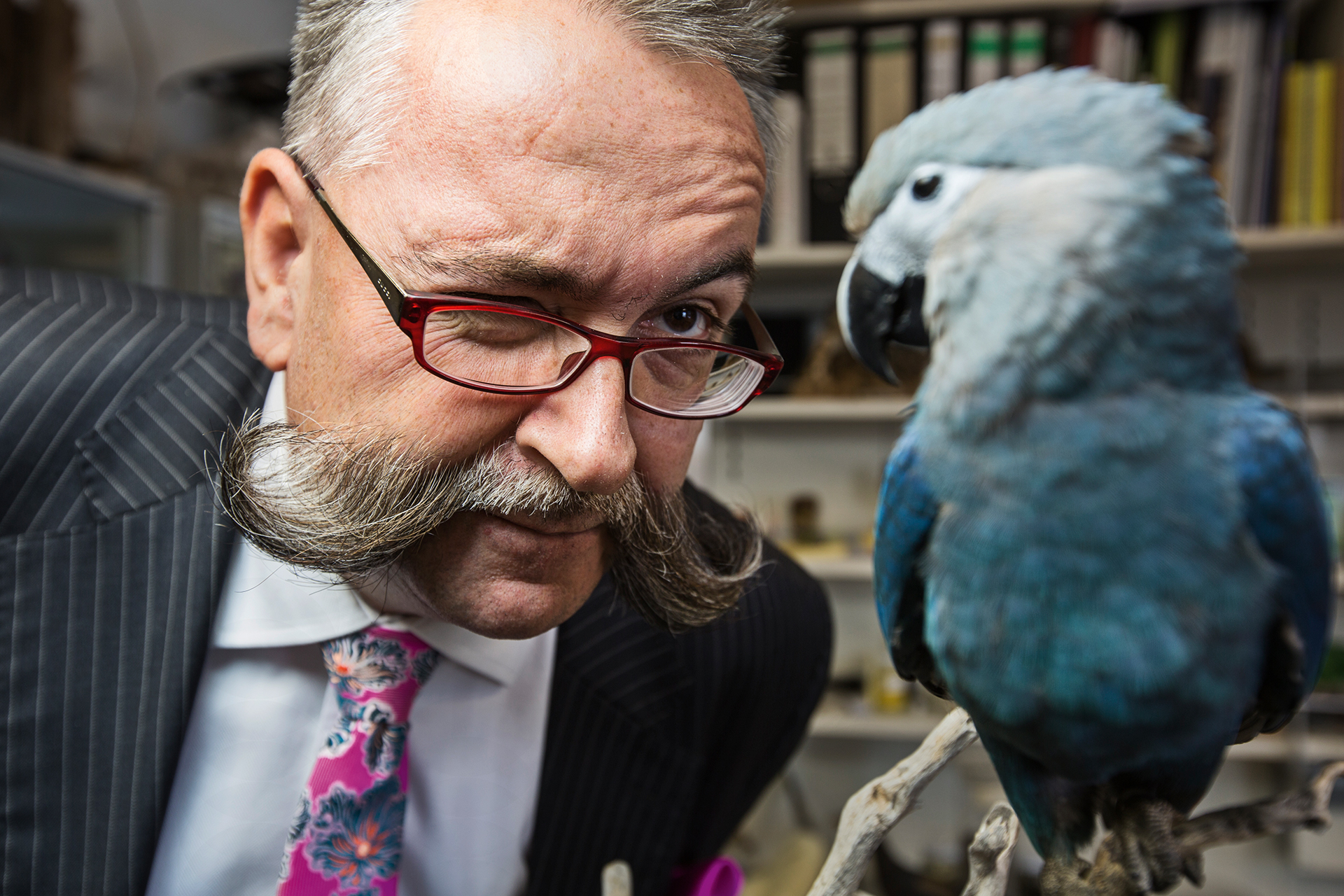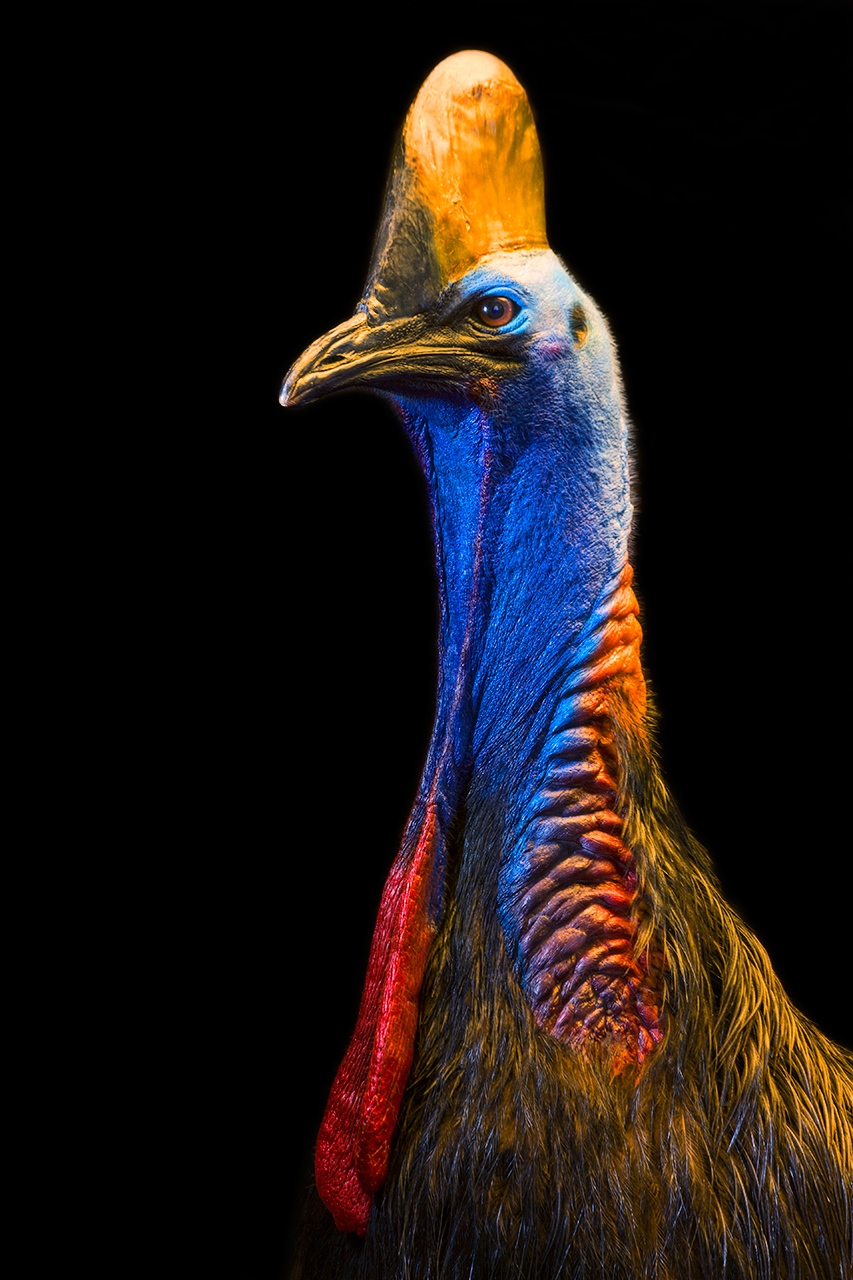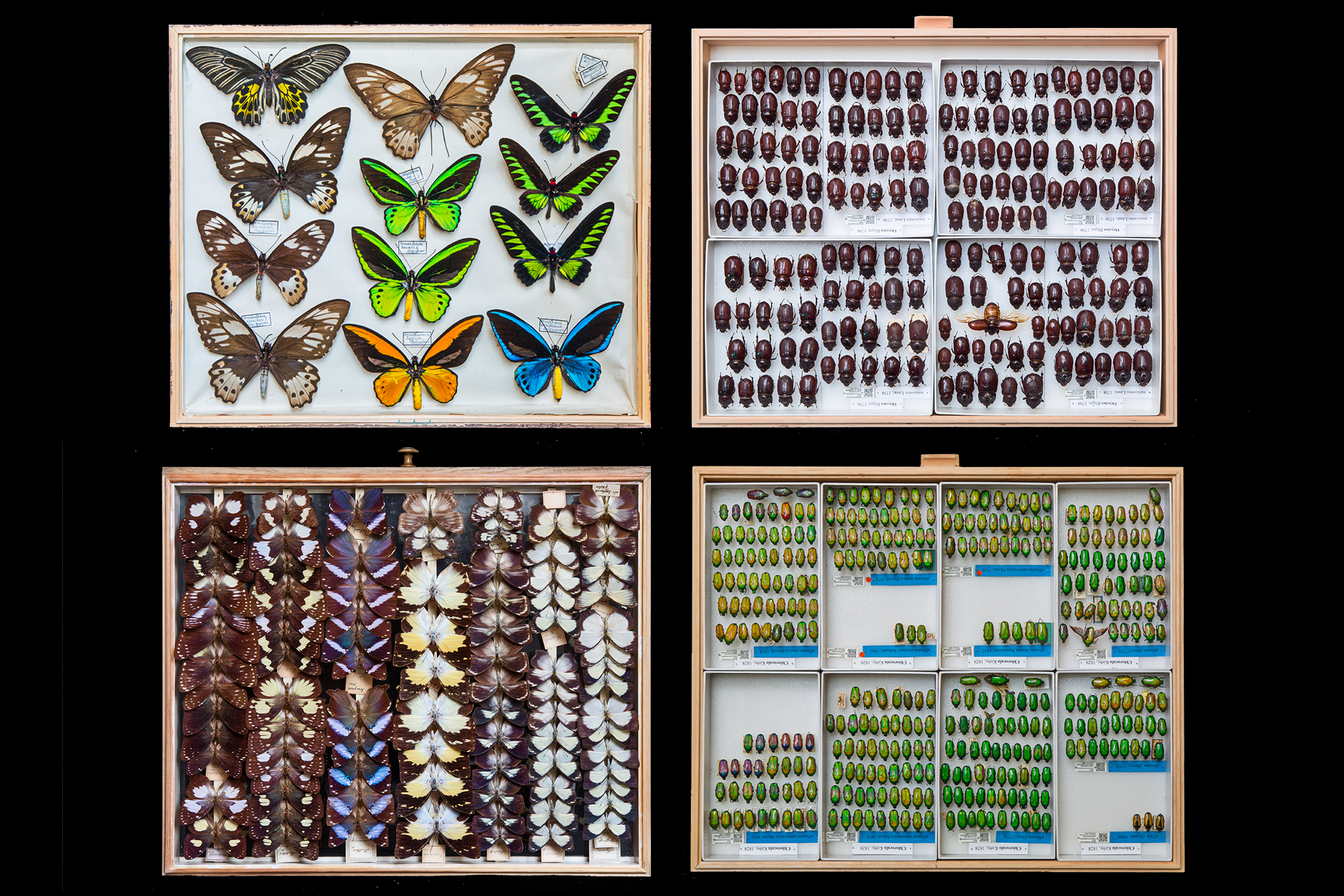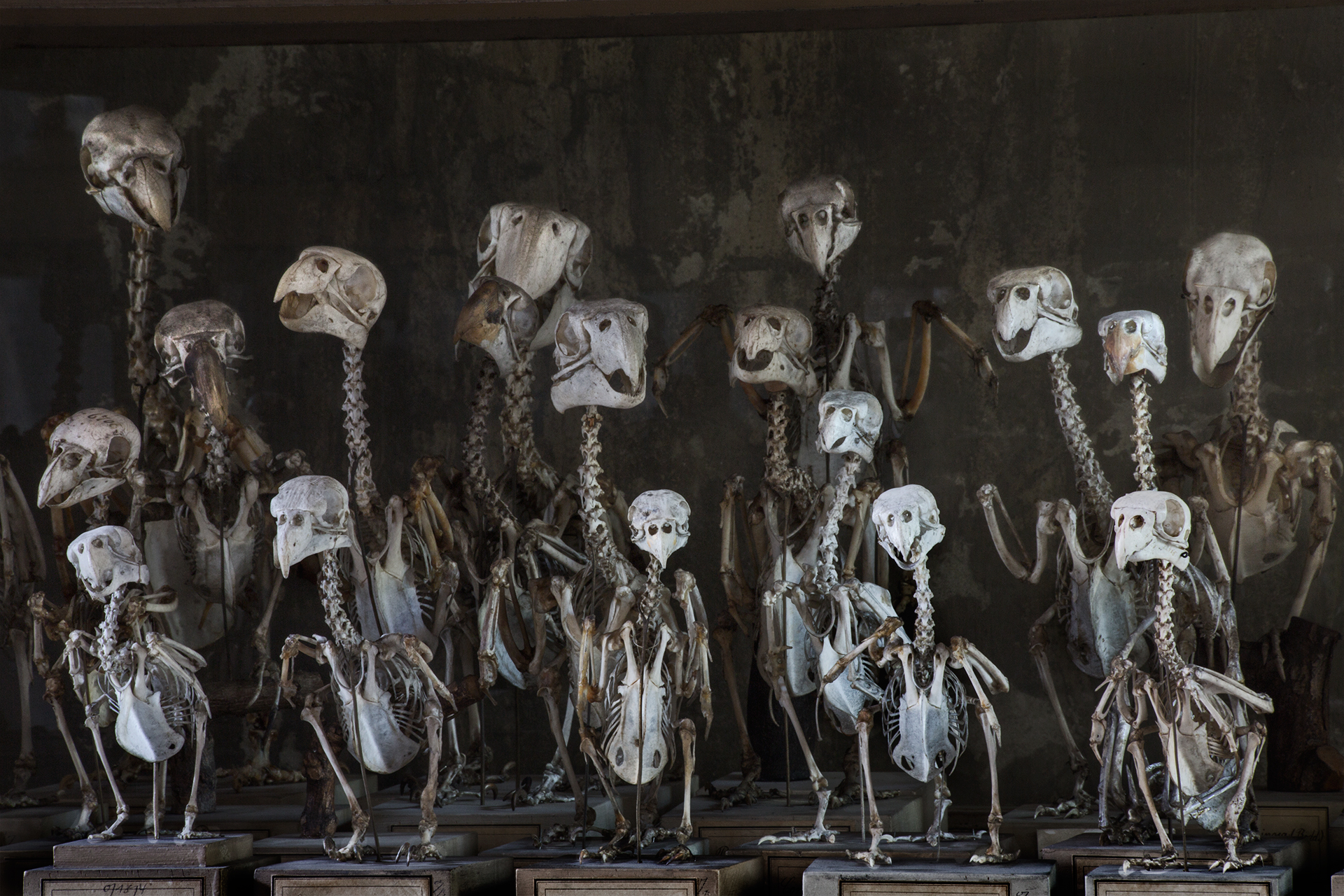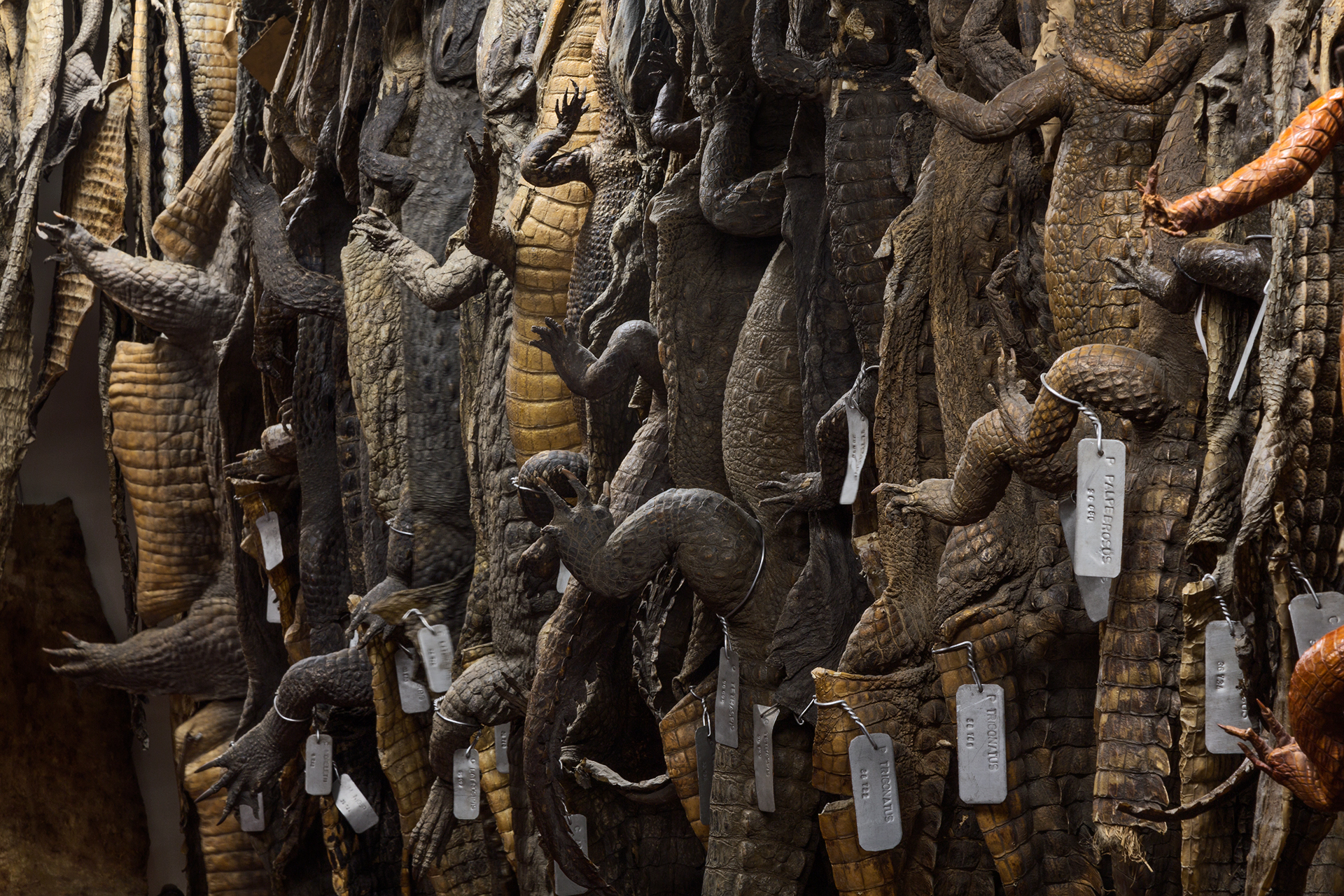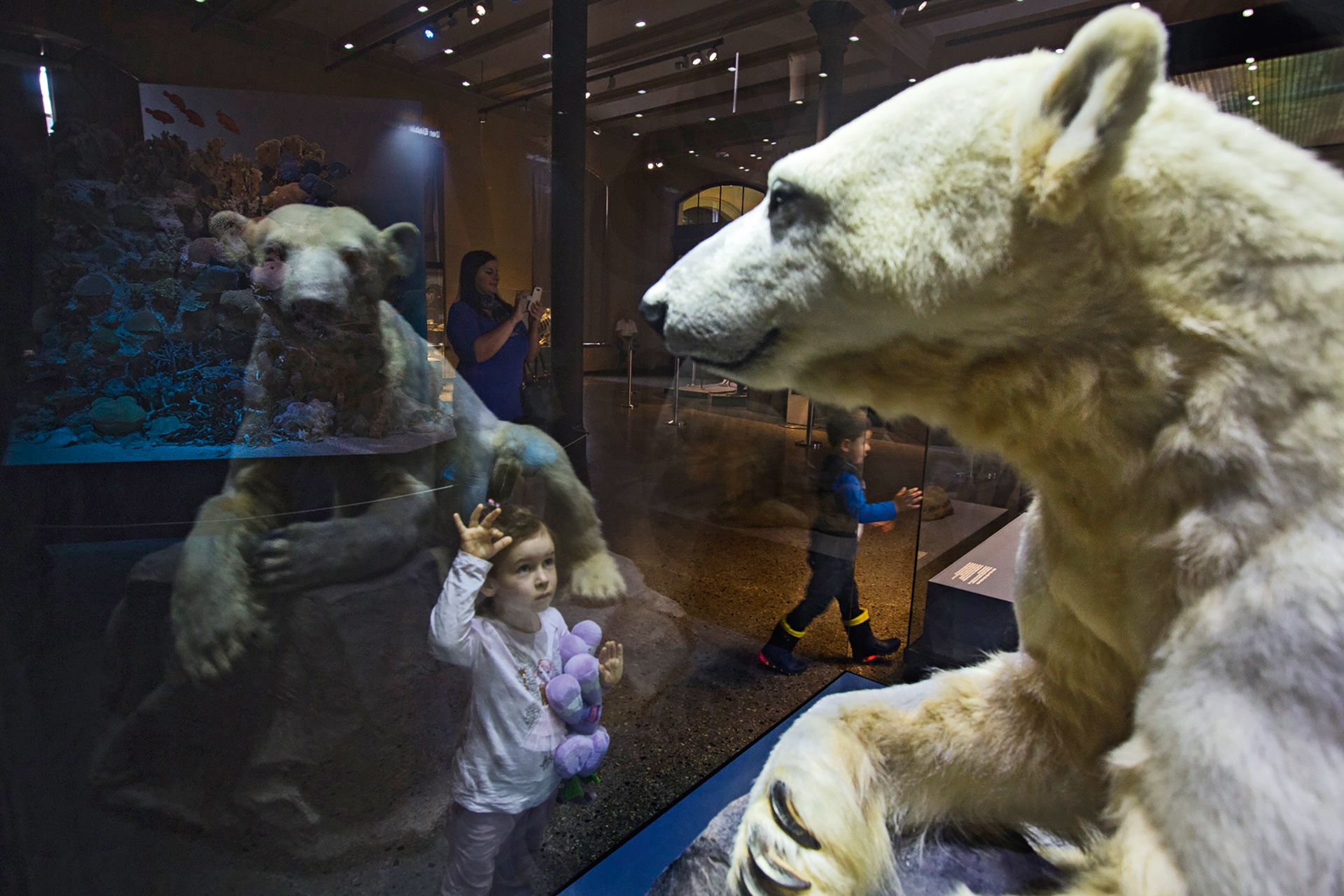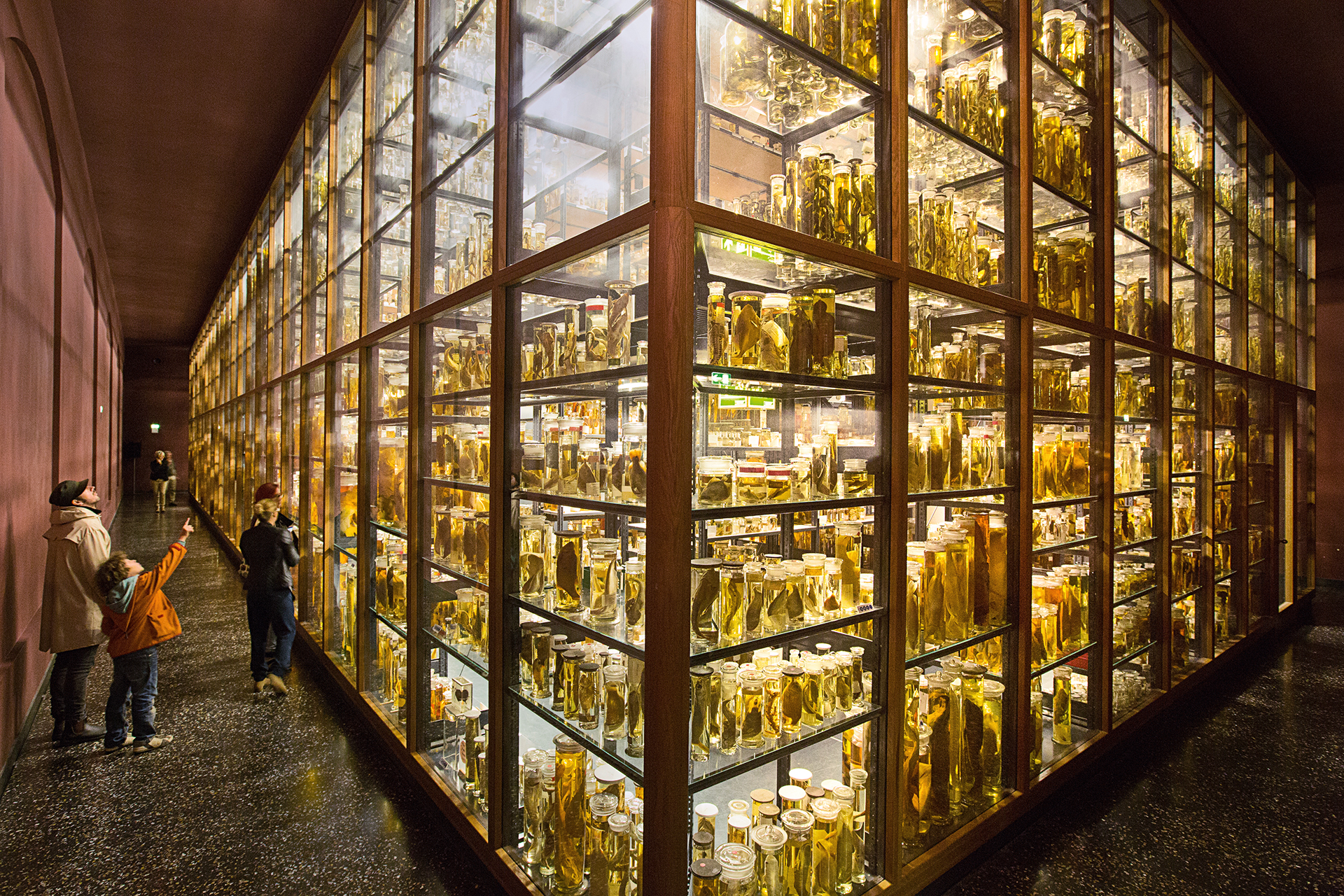Museums offer a different and more personal learning experience than the internet. The Natural History Museum [Naturhistorisches Museum] in Berlin, the largest of its kind in Germany, invites visitors to explore the planet and its history from up close. Over half a million people come to see its exhibitions every year. It is best known for showing the largest mounted dinosaur in the world and houses a well-preserved Archaeopteryx, the earliest known bird. Beginning in late 2015, a T. Rex, the only one of its kind in Europe, is also displayed there.
In a spacious hall, several dinosaurs tower over visitors at their full height. Knut, a polar bear beloved by the public who died in the city’s own zoo in 2011, is part of the collection. In a glass case, he appears trapped in time, as if in any given moment he might come to life again. For its director, Prof. Johannes Vogel, the real-life-experience is what sets the museum apart: Visitors want a sense of magic that no replica or screen can offer.
Behind the scenes, in a world few get to see, are the museum’s storage vaults. Insects, some smaller than a fingernail, are neatly arranged in countless glass-encased drawers; shark hides, dating as far back as the 17th century, can be found in a closet; dinosaur bones are tucked away under sheets in a basement.

